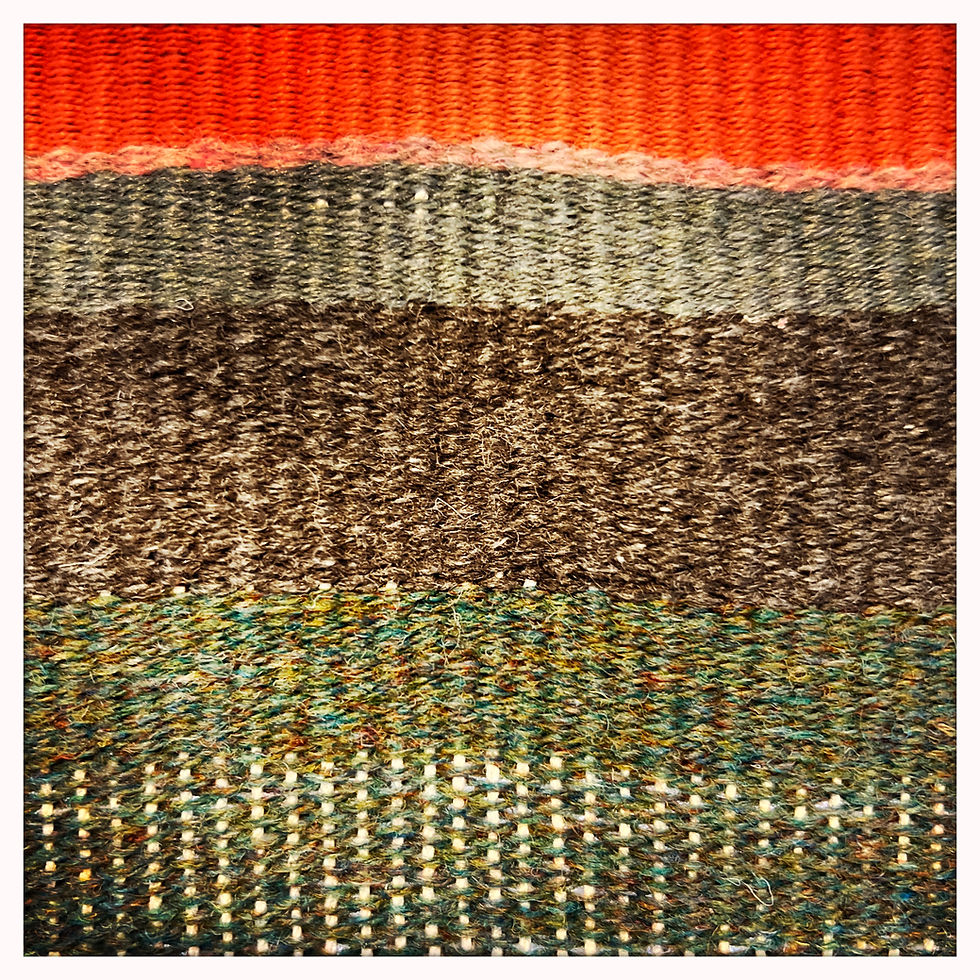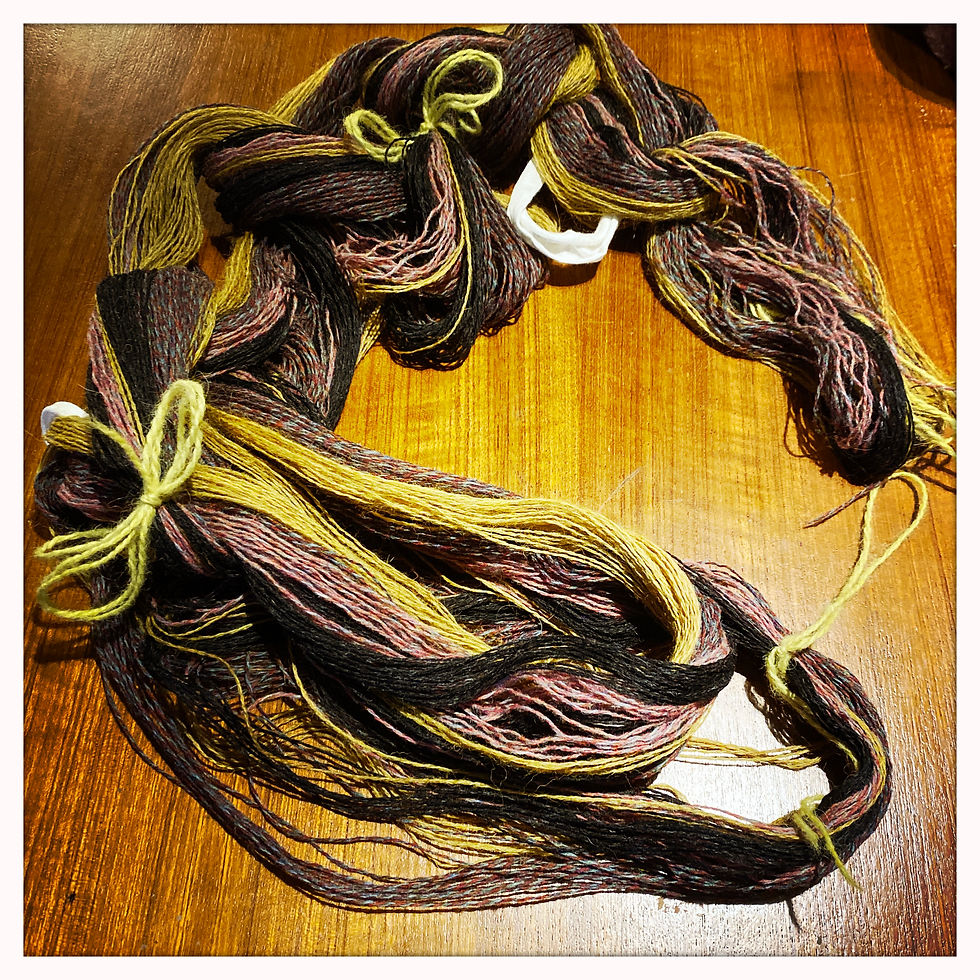Art & Language
- claregeeorkney
- Mar 24, 2023
- 3 min read

I am an Artist with a capital A. But there are many times in the last 30+ years that I haven’t felt able to call myself an Artist, mostly due to fallow periods when I haven’t been ‘practicing’ (or is it practising? or both/neither simultaneously?) or when I have a crisis of confidence and don’t want to appear to be claiming something that others would question.
Whatever my own foibles or confidence issues, one thing I have understood for almost all of those 30 years is that visual art is my language. As an English person who was not taught other languages early enough to be bi- or multi-lingual (shame on the UK for resting on its linguistic morals) the one language I am pretty much comfortable with is visual art. I don’t mean that I know every technical term for every process - that is (in my view) the least important ‘bit’ of this. What I mean is that I have a level of comfort with visiting galleries, I have a confidence in my own opinion, I can decide for myself whether I like a piece of work or I don’t, and generally speaking I can articulate my reasoning for those opinions.
I do recognise that this is down to education, immersion, discussion, debate, practical experience, having artistic mentors and provocateurs around me. I am lucky.


I remember, very early doors, being fascinated by the collaborative Art & Language, and other amazing collaborative artists and groups / movements such as Fluxus. Debate, discussion, challenge and provocation were at theit heart and I don’t profess to understand or agree with all of the premises on which the work was created (or not), but the idea of finding a common language always fascinated me and still does.
So, there is art as language and then there is the language/s which different art forms use to describe their processes or tools - which are, frankly, really only relevant to those using those particular processes, rather than any audience the work may (or may not) eventually be in front of.
And don’t get me started on the whole trait around trying to show how clever you are by using language that you think makes you look smart, but in reality just means you are happy to make other people feel stupid…

In 2016, I visited Global Yell https://www.globalyell.org/ in Shetland - a charity working to celebrate, educate and research weaving and music. I went because I wanted to catch up with its founder, Andy Ross, who I was lucky enough to meet in Greenland in April 2016, where we were each representing Shetland and Orkney on an EU funded research project about the ability for community arts practice to economically benefit remote and rural areas.
I knew absolutely nothing about weaving. All I did know was that I found weaving to be a magical ‘thing’ of beauty, almost a dark art, because try as a might, I had no clue, really, how expert artisan weavers made what they made. I felt no shame about this whatsoever (because of my general confidence and attitude that what matters is my response to it not whether I can rightly describe it). Take The Maelstrom (above), which was on display in the Global Yell studio when I visited. It was woven by Lucy McMullen for the Ann Sutton Foundation (now in the collection of Global Yell, as are the looms and other equipment that the Ann Sutton Foundaction gifted and which started the project).
I was totally in awe of this piece - it’s complexity and simplicity, it’s beauty, the textures, the colours, the human scale, the rhythms and the movement. I didn’t need to know that it was made using a technique called double weave or double cloth. I didn’t need to know it had been starched and woven from Shetland wool. I just liked it, and that is good enough.
Since this visit, I have taken my own journey of discovery into weaving, and the language of weaving - setts, dents, warps, wefts, beams, reeds and the like have joined other artistic technical terms in my vocabulary. But it doesn’t mean I appreciate the finished results of other people’s work any more or less. What it does mean is that when I was musing on Shetland and thought about that sculpture today, I thought to myself - I bet that is double weave - and it is. That’s it. That’s all. Not important.


Images:
Clare Gee weaving in progress 2023
Screenshot of “Ways of Seeing” Art & Language (specific object.com)
Fluxus Art Movement Manifesto
The Maelstrom, woven by Lucy McMullen for the Ann Sutton Foundation
Clare Gee weaving in progress 2023
Clare Gee warp 2022



Thanks. That’s thought-provoking. I’m with you much of the way. I am lucky too, to have the life experience which encourages me to have an opinion, a response, a consideration in the circumstances you describe, which I may or may not articulate out loud, but which definitely feels valid, and which I will own! It may even lead to some creativity of my own. Just want to say, that for me, appreciation of others’ work - though not dependent on my understanding of their technique, method etc. - is enriched by it, because I find it illuminating. Maybe it tells me something about their experience or motivation, which helps me understand their creativity a bit. Lots to ponder…..